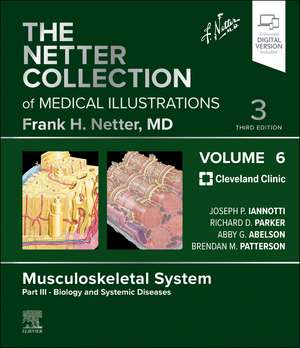The Netter Collection of Medical Illustrations: Musculoskeletal System, Volume 6, Part III - Biology and Systemic Diseases: Netter Green Book Collection
Editat de Joseph Iannotti, Richard Parker, Tom Mroz, Brendan Patterson, Abby Abelsonen Limba Engleză Hardback – 8 mai 2024
Din seria Netter Green Book Collection
- 24%
 Preț: 442.32 lei
Preț: 442.32 lei - 24%
 Preț: 711.72 lei
Preț: 711.72 lei - 5%
 Preț: 905.37 lei
Preț: 905.37 lei - 5%
 Preț: 390.03 lei
Preț: 390.03 lei - 5%
 Preț: 428.43 lei
Preț: 428.43 lei - 22%
 Preț: 652.04 lei
Preț: 652.04 lei - 5%
 Preț: 1266.48 lei
Preț: 1266.48 lei - 5%
 Preț: 390.03 lei
Preț: 390.03 lei - 5%
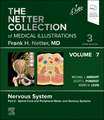 Preț: 393.45 lei
Preț: 393.45 lei - 23%
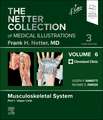 Preț: 424.38 lei
Preț: 424.38 lei - 5%
 Preț: 424.13 lei
Preț: 424.13 lei - 22%
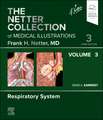 Preț: 396.51 lei
Preț: 396.51 lei - 24%
 Preț: 386.23 lei
Preț: 386.23 lei - 23%
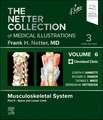 Preț: 408.25 lei
Preț: 408.25 lei - 23%
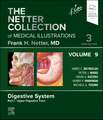 Preț: 392.37 lei
Preț: 392.37 lei - 23%
 Preț: 389.48 lei
Preț: 389.48 lei - 5%
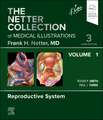 Preț: 395.70 lei
Preț: 395.70 lei - 5%
 Preț: 393.17 lei
Preț: 393.17 lei
Preț: 430.23 lei
Preț vechi: 557.22 lei
-23% Nou
Puncte Express: 645
Preț estimativ în valută:
82.34€ • 85.64$ • 67.97£
82.34€ • 85.64$ • 67.97£
Carte disponibilă
Livrare economică 17-31 martie
Livrare express 08-14 martie pentru 172.78 lei
Preluare comenzi: 021 569.72.76
Specificații
ISBN-13: 9780323880879
ISBN-10: 0323880878
Pagini: 368
Ilustrații: 300 illustrations (300 in full color)
Dimensiuni: 216 x 276 x 21 mm
Greutate: 1.41 kg
Ediția:3
Editura: Elsevier
Seria Netter Green Book Collection
ISBN-10: 0323880878
Pagini: 368
Ilustrații: 300 illustrations (300 in full color)
Dimensiuni: 216 x 276 x 21 mm
Greutate: 1.41 kg
Ediția:3
Editura: Elsevier
Seria Netter Green Book Collection
Cuprins
SECTION 1 EMBRYOLOGY
1.1 Amphioxus and Human Embryo at 16 Days
1.2 Differentiation of Somites into Myotomes, Sclerotomes, and Dermatomes
1.3 Progressive Stages in Formation of Vertebral Column, Dermatomes, and Myotomes; Mesenchymal Precartilage Primordia of Axial and Appendicular Skeletons at 5 Weeks
1.4 Fate of Body, Costal Process, and Neural Arch Components of Vertebral Column, with Sites and Time of Appearance of Ossification Centers
1.5 First and Second Cervical Vertebrae at Birth; Development of Sternum
1.6 Early Development of Skull
1.7 Skeleton of Full-Term Newborn
1.8 Changes in Position of Limbs Before Birth; Precartilage Mesenchymal Cell Concentrations of Appendicular Skeleton at 6 Weeks
1.9 Changes in Ventral Dermatome Pattern During Limb Development
1.10 Initial Bone Formation in Mesenchyme; Early Stages of Flat Bone Formation
1.11 Secondary Osteon (Haversian System)
1.12 Growth and Ossification of Long Bones
1.13 Growth in Width of a Bone and Osteon Remodeling
1.14 Remodeling: Maintenance of Basic Form and Proportions of Bone during Growth
1.15 Development of Three Types of Synovial Joints
1.16 Segmental Distribution of Myotomes in Fetus of 6 Weeks; Developing Skeletal Muscles at 8 Weeks
1.17 Development of Skeletal Muscle Fibers
1.18 Cross Sections of Body at 6 to 7 Weeks
1.19 Prenatal Development of Perineal Musculature
1.20 Origins and Innervations of Pharyngeal Arch and Somite Myotome Muscles
1.21 Branchiomeric and Adjacent Myotomic Muscles at Birth
SECTION 2 PHYSIOLOGY
2.1 Microscopic Appearance of Skeletal Muscle Fibers
2.2 Organization of Skeletal Muscle
2.3 Intrinsic Blood and Nerve Supply of Skeletal Muscle
2.4 Composition and Structure of Myofilaments
2.5 Muscle Contraction and Relaxation
2.6 Biochemical Mechanics of Muscle Contraction
2.7 Sarcoplasmic Reticulum and Initiation of Muscle Contraction
2.8 Initiation of Muscle Contraction by Electric Impulse and Calcium Movement
2.9 Motor Unit
2.10 Structure of Neuromuscular Junction
2.11 Physiology of Neuromuscular Junction
2.12 Pharmacology of Neuromuscular Transmission
2.13 Physiology of Muscle Contraction
2.14 Energy Metabolism of Muscle
2.15 Muscle Fiber Types
2.16 Growth Plate: Structure, Physiology, and Pathophysiology
2.17 Growth Plate: Structure, Physiology, and Pathophysiology (Continued)
2.18 Growth Plate: Structure and Blood Supply
2.19 Growth Plate: Peripheral Fibrocartilaginous Element
2.20 Composition and Structure of Cartilage
2.21 Bone Cells and Bone Deposition
2.22 Composition of Bone
2.23 Structure of Cortical (Compact) Bone
2.24 Structure of Trabecular Bone
2.25 Formation and Composition of Collagen
2.26 Formation and Composition of Proteoglycan
2.27 Structure and Function of Synovial Membrane
2.28 Histology of Connective Tissue
2.29 Bone Homeostasis: Dynamics
2.30 Bone Homeostasis: Regulation of Calcium and Phosphate Metabolism
2.31 Effects of Bone Formation and Bone Resorption on Skeletal Mass
2.32 Four Mechanisms of Bone Mass Regulation
2.33 Normal Calcium and Phosphate Metabolism
2.34 Nutritional Calcium Deficiency
2.35 Effects of Disuse and Stress (Weight Bearing) on Bone Mass
2.36 Musculoskeletal Effects of Weightlessness (Space Flight)
2.37 Bone Architecture and Remodeling in Relation to Stress
2.38 Stress-Generated Electric Potentials in Bone
2.39 Bioelectric Potentials in Bone
2.40 Age-Related Changes in Bone Geometry
2.41 Age-Related Changes in Bone Geometry (Continued)
SECTION 3 METABOLIC DISEASES
3.1 Parathyroid Hormone
3.2 Primary Hyperparathyroidism: Pathophysiology
3.3 Primary Hyperparathyroidism: Clinical Manifestations
3.4 Differential Diagnosis of Hypercalcemic States
3.5 Hypoparathyroidism: Pathologic Physiology
3.6 Chronic Hypoparathyroidism: Clinical Manifestations
3.7 Hypocalcemia: Clinical Manifestations
3.8 Pseudohypoparathyroidism
3.9 Mechanism of Parathyroid Hormone Activity on End Organ
3.10 Mechanism of Parathyroid Hormone Activity on End Organ: Cyclic AMP Response to PTH
3.11 Clinical Guide to Parathyroid Hormone Assay
3.12 Clinical Guide to Parathyroid Hormone Assay (Continued)
3.13 Childhood Rickets
3.14 Adult Osteomalacia
3.15 Nutritional Deficiency: Rickets and Osteomalacia
3.16 Vitamin D-Resistant Rickets and Osteomalacia Due to Proximal Renal Tubular Defects (Hypophosphatemic Rachitic Syndromes)
3.17 Vitamin D-Resistant Rickets and Osteomalacia Due to Proximal and Distal Renal Tubular Defects
3.18 Vitamin D-Dependent (Pseudodeficiency) Rickets and Osteomalacia
3.19 Vitamin D-Resistant Rickets and Osteomalacia Due to Renal Tubular Acidosis
3.20 Metabolic Aberrations of Renal Osteodystrophy
3.21 Rickets, Osteomalacia, and Renal Osteodystrophy
3.22 Bony Manifestations of Renal Osteodystrophy
3.23 Vascular and Soft Tissue Calcification in Secondary Hyperparathyroidism of Chronic Renal Disease
3.24 Clinical Guide to Vitamin D Measurement
3.25 Hypophosphatasia
3.26 Osteoporosis: Risk Factors
3.27 Osteoporosis: Involutional
3.28 Osteoporosis: Clinical Manifestations
3.29 Osteoporosis: Progressive Spinal Deformity
3.30 Radiology of Osteopenia: Classification
3.31 Radiology of Osteopenia: Imaging
3.32 Radiology of Osteopenia: DXA
3.33 Transiliac Bone Biopsy
3.34 Treatment of Complications of Spinal Osteoporosis
3.35 Treatment of Osteoporosis: Medications
3.36 Treatment of Osteoporosis: Functional Domains of Bisphosphonate Chemical Structure
3.37 Treatment of Osteoporosis: Inhibition of FPP Synthase
3.38 Osteogenesis Imperfecta Type I
3.39 Osteogenesis Imperfecta Type III
3.40 Marfan Syndrome
3.41 Marfan Syndrome (Continued)
3.42 Ehlers-Danlos Syndromes
3.43 Ehlers-Danlos Syndromes (Continued)
3.44 Osteopetrosis (Albers-Schönberg Disease)
3.45 Paget Disease of Bone
3.46 Paget Disease of Bone (Continued)
3.47 Pathophysiology and Treatment of Paget Disease of Bone
3.48 Fibrodysplasia Ossificans Progressiva
SECTION 4 CONGENITAL AND DEVELOPMENTAL DISORDERS
Dwarfism
4.1 Achondroplasia: Clinical Manifestations
4.2 Achondroplasia: Clinical Manifestations (Continued)
4.3 Achondroplasia: Clinical Manifestations of Spine
4.4 Achondroplasia: Diagnostic Testing
4.5 Hypochondroplasia
4.6 Diastrophic Dwarfism
4.7 Pseudoachondroplasia
4.8 Metaphyseal Chondrodysplasia, McKusick Type
4.9 Metaphyseal Chondrodysplasia, Schmid Type
4.10 Chondrodysplasia Punctata
4.11 Chondroectodermal Dysplasia (Ellis-van Creveld Syndrome), Grebe Chondrodysplasia, and Acromesomelic Dysplasia
4.12 Multiple Epiphyseal Dysplasia, Fairbank Type
4.13 Pycnodysostosis (Pyknodysostosis)
4.14 Camptomelic (Campomelic) Dysplasia
4.15 Spondyloepiphyseal Dysplasia Tarda and Spondyloepiphyseal Dysplasia Congenita
4.16 Spondylocostal Dysostosis and Dyggve-MelchiorClausen Dysplasia
4.17 Kniest Dysplasia
4.18 Mucopolysaccharidoses
4.19 Principles of Treatment of Skeletal Dysplasias
Neurofibromatosis
4.20 Diagnostic Criteria and Cutaneous Lesions in Neurofibromatosis
4.21 Cutaneous Lesions in Neurofibromatosis
4.22 Spinal Deformities in Neurofibromatosis
4.23 Bone Overgrowth and Erosion in Neurofibromatosis
Other
4.24 Arthrogryposis Multiplex Congenita
4.25 Fibrodysplasia Ossificans Progressiva and Progressive Diaphyseal Dysplasia
4.26 Osteopetrosis and Osteopoikilosis
4.27 Melorheostosis
4.28 Congenital Elevation of Scapula, Absence of Clavicle, and Pseudarthrosis of Clavicle
4.29 Madelung Deformity
4.30 Congenital Bowing of the Tibia
4.31 Congenital Pseudoarthrosis of the Tibia and Dislocation of the Knee
Leg-Length Discrepancy
4.32 Clinical Manifestations
4.33 Evaluation of Leg-Length Discrepancy
4.34 Charts for Timing Growth Arrest and Determining Amount of Limb Lengthening to Achieve Limb-Length Equality at Maturity
4.35 Growth Arrest
4.36 Ilizarov and De Bastiani Techniques for Limb Lengthening
Congenital Limb Malformation
4.37 Growth Factors
4.38 Foot Prehensility in Amelia
4.39 Failure of Formation of Parts: Transverse Arrest
4.40 Failure of Formation of Parts: Transverse Arrest (Continued)
4.41 Failure of Formation of Parts: Transverse Arrest (Continued)
4.42 Failure of Formation of Parts: Transverse Arrest (Continued)
4.43 Failure of Formation of Parts: Transverse Arrest (Continued)
4.44 Failure of Formation of Parts: Transverse Arrest (Continued)
4.45 Failure of Formation of Parts: Transverse Arrest (Continued)
4.46 Failure of Formation of Parts: Longitudinal Arrest
4.47 Failure of Formation of Parts: Longitudinal Arrest (Continued)
4.48 Failure of Formation of Parts: Longitudinal Arrest (Continued)
4.49 Failure of Formation of Parts: Longitudinal Arrest (Continued)
4.50 Duplication of Parts, Overgrowth, and Congenital Constriction Band Syndrome
SECTION 5 RHEUMATIC DISEASES
Rheumatic Diseases
5.1 Joint Pathology in Rheumatoid Arthritis
5.2 Early and Moderate Hand Involvement in Rheumatoid Arthritis
5.3 Advanced Hand Involvement in Rheumatoid Arthritis
5.4 Foot Involvement in Rheumatoid Arthritis
5.5 Knee, Shoulder, and Hip Joint Involvement in Rheumatoid Arthritis
5.6 Extraarticular Manifestations in Rheumatoid Arthritis
5.7 Extraarticular Manifestations in Rheumatoid Arthritis (Continued)
5.8 Immunologic Features in Rheumatoid Arthritis
5.9 Variable Clinical Course of Adult Rheumatoid Arthritis
Treatment of Rheumatoid Arthritis
5.10 Exercises for Upper Extremities
5.11 Exercises for Shoulders and Lower Extremities
5.12 Surgical Management in Rheumatoid Arthritis
Synovial Fluid Examination
5.13 Techniques for Aspiration of Joint Fluid
5.14 Synovial Fluid Examination
5.15 Synovial Fluid Examination (Continued)
Juvenile Arthritis
5.16 Systemic Juvenile Arthritis
5.17 Systemic Juvenile Arthritis (Continued)
5.18 Hand Involvement in Juvenile Arthritis
5.19 Lower Limb Involvement in Juvenile Arthritis
5.20 Ocular Manifestations in Juvenile Arthritis
5.21 Sequelae of Juvenile Arthritis
Osteoarthritis
5.22 Distribution of Joint Involvement in Osteoarthritis
5.23 Clinical Findings in Osteoarthritis
5.24 Clinical Findings in Osteoarthritis (Continued)
5.25 Hand Involvement in Osteoarthritis
5.26 Hip Joint Involvement in Osteoarthritis
5.27 Degenerative Changes
5.28 Spine Involvement in Osteoarthritis
Other
5.29 Ankylosing Spondylitis
5.30 Ankylosing Spondylitis (Continued)
5.31 Degenerative Changes in the Cervical Vertebrae
5.32 Psoriatic Arthritis
5.33 Psoriatic Arthritis (Continued)
5.34 Reactive Arthritis (formerly Reiter Syndrome)
5.35 Infectious Arthritis
5.36 Tuberculous Arthritis
5.37 Hemophilic Arthritis
5.38 Neuropathic Joint Disease
5.39 Gout and Gouty Arthritis
5.40 Tophaceous Gout
5.41 Calcium Pyrophosphate Deposition Disease (Pseudogout)
5.42 Nonarticular Rheumatism
5.43 Clinical Manifestations of Polymyalgia Rheumatica and Giant Cell Arteritis
5.44 Imaging of Polymyalgia Rheumatica and Giant Cell Arteritis
5.45 Fibromyalgia
5.46 Pathophysiology of Autoinflammatory Syndromes
5.47 Cutaneous Findings in Autoinflammatory Syndromes
5.48 Joint and Central Nervous System Findings in Autoinflammatory Syndromes
5.49 Vasculitis: Vessel Distribution
5.50 Vasculitis: Clinical and Histologic Features of Granulomatosis with Polyangiitis
5.51 Key Clinical Features of Primary Vasculitic Diseases
5.52 Renal Lesions in Systemic Lupus Erythematosus
5.53 Cutaneous Lupus Band Test
5.54 Lupus Erythematosus of the Heart
5.55 Antiphospholipid Syndrome
5.56 Scleroderma: Clinical Manifestations
5.57 Scleroderma: Clinical Findings
5.58 Scleroderma: Radiographic Findings of Acro-osteolysis and Calcinosis Cutis
5.59 Polymyositis and Dermatomyositis
5.60 Polymyositis and Dermatomyositis (Continued)
5.61 Primary Angiitis of the Central Nervous System
5.62 Behçet Syndrome: Triad
5.63 Behçet Syndrome: Positive Pathergy Test
SECTION 6 TUMORS OF MUSCULOSKELETAL SYSTEM
6.1 Initial Evaluation and Staging of Musculoskeletal Tumors
Benign Tumors of Bone
6.2 Osteoid Osteoma
6.3 Osteoblastoma
6.4 Enchondroma
6.5 Periosteal Chondroma
6.6 Osteocartilaginous Exostosis (Osteochondroma)
6.7 Chondroblastoma and Chondromyxoid Fibroma
6.8 Fibrous Dysplasia
6.9 Nonossifying Fibroma and Desmoplastic Fibroma
6.10 Eosinophilic Granuloma
6.11 Aneurysmal Bone Cyst
6.12 Simple Bone Cyst
6.13 Giant Cell Tumor of Bone
Malignant Tumors of Bone
6.14 Osteosarcoma
6.15 Osteosarcoma (Continued)
6.16 Osteosarcoma (Continued)
6.17 Chondrosarcoma
6.18 Fibrous Histiocytoma and Fibrosarcoma of Bone
6.19 Reticuloendothelial Tumors: Ewing Sarcoma
6.20 Malignant Tumors of Bone: Adamantinoma
6.21 Malignant Tumors of Bone: Plasmacytoma/Multiple Myeloma
6.22 Tumors Metastatic to Bone
Benign Tumors of Soft Tissue
6.23 Desmoid, Fibromatosis, and Hemangioma
6.24 Lipoma, Neurofibroma, and Myositis Ossificans
Malignant Tumors of Soft Tissue
6.25 Sarcomas of Soft Tissue
6.26 Sarcomas of Soft Tissue (Continued)
6.27 Sarcomas of Soft Tissue (Continued)
Procedures
6.28 Tumor Biopsy
6.29 Surgical Margins
6.30 Reconstruction after Partial Excision or Curettage of Bone (Fracture Prophylaxis)
6.31 Limb-Salvage Procedures for Reconstruction
6.32 Radiologic Findings in Limb-Salvage Procedures
6.33 Limb-Salvage Procedures
SECTION 7 INJURY TO MUSCULOSKELETAL SYSTEM
7.1 Closed Soft Tissue Injuries
7.2 Open Soft Tissue Wounds
7.3 Treatment of Open Soft Tissue Wounds
7.4 Pressure Ulcers
7.5 Excision of Deep Pressure Ulcer
7.6 Classification of Burns
7.7 Causes and Clinical Types of Burns
7.8 Escharotomy for Burns
7.9 Prevention of Infection in Burn Wounds
7.10 Metabolic and Systemic Effects of Burns
7.11 Excision and Grafting for Burns
7.12 Etiology of Compartment Syndrome
7.13 Pathophysiology of Compartment and Crush Syndromes
7.14 Acute Anterior Compartment Syndrome
7.15 Measurement of Intracompartmental Pressure
7.16 Incisions for Compartment Syndrome of Forearm and Hand
7.17 Incisions for Compartment Syndrome of Leg
7.18 Healing of Incised, Sutured Skin Wound
7.19 Healing of Excised Skin Wound
7.20 Types of Joint Injury
7.21 Classification of Fracture
7.22 Types of Displacement
7.23 Types of Fracture
7.24 Healing of Fracture
7.25 Primary Union
7.26 Factors That Promote or Delay Bone Healing
SECTION 8 SOFT TISSUE INFECTIONS
8.1 Septic Joint
8.2 Etiology and Prevalence of Hematogenous Osteomyelitis
8.3 Pathogenesis of Hematogenous Osteomyelitis
8.4 Clinical Manifestations of Hematogenous Osteomyelitis
8.5 Direct (Nonhematogenous) Causes of Osteomyelitis
8.6 Direct (Nonhematogenous) Causes of Osteomyelitis (Continued)
8.7 Osteomyelitis after Open Fracture
8.8 Recurrent Postoperative Osteomyelitis
8.9 Delayed Posttraumatic Osteomyelitis in Diabetic Patient
SECTION 9 FRACTURE COMPLICATIONS
9.1 Neurovascular Injury
9.2 Acute Respiratory Distress Syndrome
9.3 Infection
9.4 Surgical Management of Open Fractures
9.5 Gas Gangrene
9.6 Implant Failure
9.7 Malunion of Fracture
9.8 Growth Deformity
9.9 Posttraumatic Osteoarthritis
9.10 Osteonecrosis
9.11 Joint Stiffness
9.12 Complex Regional Pain Syndrome
9.13 Nonunion of Fracture
9.14 Surgical Management of Nonunion
9.15 Electric Stimulation of Bone Growth
9.16 Noninvasive Coupling Methods of Electric Stimulation of Bone
Selected References
Index
1.1 Amphioxus and Human Embryo at 16 Days
1.2 Differentiation of Somites into Myotomes, Sclerotomes, and Dermatomes
1.3 Progressive Stages in Formation of Vertebral Column, Dermatomes, and Myotomes; Mesenchymal Precartilage Primordia of Axial and Appendicular Skeletons at 5 Weeks
1.4 Fate of Body, Costal Process, and Neural Arch Components of Vertebral Column, with Sites and Time of Appearance of Ossification Centers
1.5 First and Second Cervical Vertebrae at Birth; Development of Sternum
1.6 Early Development of Skull
1.7 Skeleton of Full-Term Newborn
1.8 Changes in Position of Limbs Before Birth; Precartilage Mesenchymal Cell Concentrations of Appendicular Skeleton at 6 Weeks
1.9 Changes in Ventral Dermatome Pattern During Limb Development
1.10 Initial Bone Formation in Mesenchyme; Early Stages of Flat Bone Formation
1.11 Secondary Osteon (Haversian System)
1.12 Growth and Ossification of Long Bones
1.13 Growth in Width of a Bone and Osteon Remodeling
1.14 Remodeling: Maintenance of Basic Form and Proportions of Bone during Growth
1.15 Development of Three Types of Synovial Joints
1.16 Segmental Distribution of Myotomes in Fetus of 6 Weeks; Developing Skeletal Muscles at 8 Weeks
1.17 Development of Skeletal Muscle Fibers
1.18 Cross Sections of Body at 6 to 7 Weeks
1.19 Prenatal Development of Perineal Musculature
1.20 Origins and Innervations of Pharyngeal Arch and Somite Myotome Muscles
1.21 Branchiomeric and Adjacent Myotomic Muscles at Birth
SECTION 2 PHYSIOLOGY
2.1 Microscopic Appearance of Skeletal Muscle Fibers
2.2 Organization of Skeletal Muscle
2.3 Intrinsic Blood and Nerve Supply of Skeletal Muscle
2.4 Composition and Structure of Myofilaments
2.5 Muscle Contraction and Relaxation
2.6 Biochemical Mechanics of Muscle Contraction
2.7 Sarcoplasmic Reticulum and Initiation of Muscle Contraction
2.8 Initiation of Muscle Contraction by Electric Impulse and Calcium Movement
2.9 Motor Unit
2.10 Structure of Neuromuscular Junction
2.11 Physiology of Neuromuscular Junction
2.12 Pharmacology of Neuromuscular Transmission
2.13 Physiology of Muscle Contraction
2.14 Energy Metabolism of Muscle
2.15 Muscle Fiber Types
2.16 Growth Plate: Structure, Physiology, and Pathophysiology
2.17 Growth Plate: Structure, Physiology, and Pathophysiology (Continued)
2.18 Growth Plate: Structure and Blood Supply
2.19 Growth Plate: Peripheral Fibrocartilaginous Element
2.20 Composition and Structure of Cartilage
2.21 Bone Cells and Bone Deposition
2.22 Composition of Bone
2.23 Structure of Cortical (Compact) Bone
2.24 Structure of Trabecular Bone
2.25 Formation and Composition of Collagen
2.26 Formation and Composition of Proteoglycan
2.27 Structure and Function of Synovial Membrane
2.28 Histology of Connective Tissue
2.29 Bone Homeostasis: Dynamics
2.30 Bone Homeostasis: Regulation of Calcium and Phosphate Metabolism
2.31 Effects of Bone Formation and Bone Resorption on Skeletal Mass
2.32 Four Mechanisms of Bone Mass Regulation
2.33 Normal Calcium and Phosphate Metabolism
2.34 Nutritional Calcium Deficiency
2.35 Effects of Disuse and Stress (Weight Bearing) on Bone Mass
2.36 Musculoskeletal Effects of Weightlessness (Space Flight)
2.37 Bone Architecture and Remodeling in Relation to Stress
2.38 Stress-Generated Electric Potentials in Bone
2.39 Bioelectric Potentials in Bone
2.40 Age-Related Changes in Bone Geometry
2.41 Age-Related Changes in Bone Geometry (Continued)
SECTION 3 METABOLIC DISEASES
3.1 Parathyroid Hormone
3.2 Primary Hyperparathyroidism: Pathophysiology
3.3 Primary Hyperparathyroidism: Clinical Manifestations
3.4 Differential Diagnosis of Hypercalcemic States
3.5 Hypoparathyroidism: Pathologic Physiology
3.6 Chronic Hypoparathyroidism: Clinical Manifestations
3.7 Hypocalcemia: Clinical Manifestations
3.8 Pseudohypoparathyroidism
3.9 Mechanism of Parathyroid Hormone Activity on End Organ
3.10 Mechanism of Parathyroid Hormone Activity on End Organ: Cyclic AMP Response to PTH
3.11 Clinical Guide to Parathyroid Hormone Assay
3.12 Clinical Guide to Parathyroid Hormone Assay (Continued)
3.13 Childhood Rickets
3.14 Adult Osteomalacia
3.15 Nutritional Deficiency: Rickets and Osteomalacia
3.16 Vitamin D-Resistant Rickets and Osteomalacia Due to Proximal Renal Tubular Defects (Hypophosphatemic Rachitic Syndromes)
3.17 Vitamin D-Resistant Rickets and Osteomalacia Due to Proximal and Distal Renal Tubular Defects
3.18 Vitamin D-Dependent (Pseudodeficiency) Rickets and Osteomalacia
3.19 Vitamin D-Resistant Rickets and Osteomalacia Due to Renal Tubular Acidosis
3.20 Metabolic Aberrations of Renal Osteodystrophy
3.21 Rickets, Osteomalacia, and Renal Osteodystrophy
3.22 Bony Manifestations of Renal Osteodystrophy
3.23 Vascular and Soft Tissue Calcification in Secondary Hyperparathyroidism of Chronic Renal Disease
3.24 Clinical Guide to Vitamin D Measurement
3.25 Hypophosphatasia
3.26 Osteoporosis: Risk Factors
3.27 Osteoporosis: Involutional
3.28 Osteoporosis: Clinical Manifestations
3.29 Osteoporosis: Progressive Spinal Deformity
3.30 Radiology of Osteopenia: Classification
3.31 Radiology of Osteopenia: Imaging
3.32 Radiology of Osteopenia: DXA
3.33 Transiliac Bone Biopsy
3.34 Treatment of Complications of Spinal Osteoporosis
3.35 Treatment of Osteoporosis: Medications
3.36 Treatment of Osteoporosis: Functional Domains of Bisphosphonate Chemical Structure
3.37 Treatment of Osteoporosis: Inhibition of FPP Synthase
3.38 Osteogenesis Imperfecta Type I
3.39 Osteogenesis Imperfecta Type III
3.40 Marfan Syndrome
3.41 Marfan Syndrome (Continued)
3.42 Ehlers-Danlos Syndromes
3.43 Ehlers-Danlos Syndromes (Continued)
3.44 Osteopetrosis (Albers-Schönberg Disease)
3.45 Paget Disease of Bone
3.46 Paget Disease of Bone (Continued)
3.47 Pathophysiology and Treatment of Paget Disease of Bone
3.48 Fibrodysplasia Ossificans Progressiva
SECTION 4 CONGENITAL AND DEVELOPMENTAL DISORDERS
Dwarfism
4.1 Achondroplasia: Clinical Manifestations
4.2 Achondroplasia: Clinical Manifestations (Continued)
4.3 Achondroplasia: Clinical Manifestations of Spine
4.4 Achondroplasia: Diagnostic Testing
4.5 Hypochondroplasia
4.6 Diastrophic Dwarfism
4.7 Pseudoachondroplasia
4.8 Metaphyseal Chondrodysplasia, McKusick Type
4.9 Metaphyseal Chondrodysplasia, Schmid Type
4.10 Chondrodysplasia Punctata
4.11 Chondroectodermal Dysplasia (Ellis-van Creveld Syndrome), Grebe Chondrodysplasia, and Acromesomelic Dysplasia
4.12 Multiple Epiphyseal Dysplasia, Fairbank Type
4.13 Pycnodysostosis (Pyknodysostosis)
4.14 Camptomelic (Campomelic) Dysplasia
4.15 Spondyloepiphyseal Dysplasia Tarda and Spondyloepiphyseal Dysplasia Congenita
4.16 Spondylocostal Dysostosis and Dyggve-MelchiorClausen Dysplasia
4.17 Kniest Dysplasia
4.18 Mucopolysaccharidoses
4.19 Principles of Treatment of Skeletal Dysplasias
Neurofibromatosis
4.20 Diagnostic Criteria and Cutaneous Lesions in Neurofibromatosis
4.21 Cutaneous Lesions in Neurofibromatosis
4.22 Spinal Deformities in Neurofibromatosis
4.23 Bone Overgrowth and Erosion in Neurofibromatosis
Other
4.24 Arthrogryposis Multiplex Congenita
4.25 Fibrodysplasia Ossificans Progressiva and Progressive Diaphyseal Dysplasia
4.26 Osteopetrosis and Osteopoikilosis
4.27 Melorheostosis
4.28 Congenital Elevation of Scapula, Absence of Clavicle, and Pseudarthrosis of Clavicle
4.29 Madelung Deformity
4.30 Congenital Bowing of the Tibia
4.31 Congenital Pseudoarthrosis of the Tibia and Dislocation of the Knee
Leg-Length Discrepancy
4.32 Clinical Manifestations
4.33 Evaluation of Leg-Length Discrepancy
4.34 Charts for Timing Growth Arrest and Determining Amount of Limb Lengthening to Achieve Limb-Length Equality at Maturity
4.35 Growth Arrest
4.36 Ilizarov and De Bastiani Techniques for Limb Lengthening
Congenital Limb Malformation
4.37 Growth Factors
4.38 Foot Prehensility in Amelia
4.39 Failure of Formation of Parts: Transverse Arrest
4.40 Failure of Formation of Parts: Transverse Arrest (Continued)
4.41 Failure of Formation of Parts: Transverse Arrest (Continued)
4.42 Failure of Formation of Parts: Transverse Arrest (Continued)
4.43 Failure of Formation of Parts: Transverse Arrest (Continued)
4.44 Failure of Formation of Parts: Transverse Arrest (Continued)
4.45 Failure of Formation of Parts: Transverse Arrest (Continued)
4.46 Failure of Formation of Parts: Longitudinal Arrest
4.47 Failure of Formation of Parts: Longitudinal Arrest (Continued)
4.48 Failure of Formation of Parts: Longitudinal Arrest (Continued)
4.49 Failure of Formation of Parts: Longitudinal Arrest (Continued)
4.50 Duplication of Parts, Overgrowth, and Congenital Constriction Band Syndrome
SECTION 5 RHEUMATIC DISEASES
Rheumatic Diseases
5.1 Joint Pathology in Rheumatoid Arthritis
5.2 Early and Moderate Hand Involvement in Rheumatoid Arthritis
5.3 Advanced Hand Involvement in Rheumatoid Arthritis
5.4 Foot Involvement in Rheumatoid Arthritis
5.5 Knee, Shoulder, and Hip Joint Involvement in Rheumatoid Arthritis
5.6 Extraarticular Manifestations in Rheumatoid Arthritis
5.7 Extraarticular Manifestations in Rheumatoid Arthritis (Continued)
5.8 Immunologic Features in Rheumatoid Arthritis
5.9 Variable Clinical Course of Adult Rheumatoid Arthritis
Treatment of Rheumatoid Arthritis
5.10 Exercises for Upper Extremities
5.11 Exercises for Shoulders and Lower Extremities
5.12 Surgical Management in Rheumatoid Arthritis
Synovial Fluid Examination
5.13 Techniques for Aspiration of Joint Fluid
5.14 Synovial Fluid Examination
5.15 Synovial Fluid Examination (Continued)
Juvenile Arthritis
5.16 Systemic Juvenile Arthritis
5.17 Systemic Juvenile Arthritis (Continued)
5.18 Hand Involvement in Juvenile Arthritis
5.19 Lower Limb Involvement in Juvenile Arthritis
5.20 Ocular Manifestations in Juvenile Arthritis
5.21 Sequelae of Juvenile Arthritis
Osteoarthritis
5.22 Distribution of Joint Involvement in Osteoarthritis
5.23 Clinical Findings in Osteoarthritis
5.24 Clinical Findings in Osteoarthritis (Continued)
5.25 Hand Involvement in Osteoarthritis
5.26 Hip Joint Involvement in Osteoarthritis
5.27 Degenerative Changes
5.28 Spine Involvement in Osteoarthritis
Other
5.29 Ankylosing Spondylitis
5.30 Ankylosing Spondylitis (Continued)
5.31 Degenerative Changes in the Cervical Vertebrae
5.32 Psoriatic Arthritis
5.33 Psoriatic Arthritis (Continued)
5.34 Reactive Arthritis (formerly Reiter Syndrome)
5.35 Infectious Arthritis
5.36 Tuberculous Arthritis
5.37 Hemophilic Arthritis
5.38 Neuropathic Joint Disease
5.39 Gout and Gouty Arthritis
5.40 Tophaceous Gout
5.41 Calcium Pyrophosphate Deposition Disease (Pseudogout)
5.42 Nonarticular Rheumatism
5.43 Clinical Manifestations of Polymyalgia Rheumatica and Giant Cell Arteritis
5.44 Imaging of Polymyalgia Rheumatica and Giant Cell Arteritis
5.45 Fibromyalgia
5.46 Pathophysiology of Autoinflammatory Syndromes
5.47 Cutaneous Findings in Autoinflammatory Syndromes
5.48 Joint and Central Nervous System Findings in Autoinflammatory Syndromes
5.49 Vasculitis: Vessel Distribution
5.50 Vasculitis: Clinical and Histologic Features of Granulomatosis with Polyangiitis
5.51 Key Clinical Features of Primary Vasculitic Diseases
5.52 Renal Lesions in Systemic Lupus Erythematosus
5.53 Cutaneous Lupus Band Test
5.54 Lupus Erythematosus of the Heart
5.55 Antiphospholipid Syndrome
5.56 Scleroderma: Clinical Manifestations
5.57 Scleroderma: Clinical Findings
5.58 Scleroderma: Radiographic Findings of Acro-osteolysis and Calcinosis Cutis
5.59 Polymyositis and Dermatomyositis
5.60 Polymyositis and Dermatomyositis (Continued)
5.61 Primary Angiitis of the Central Nervous System
5.62 Behçet Syndrome: Triad
5.63 Behçet Syndrome: Positive Pathergy Test
SECTION 6 TUMORS OF MUSCULOSKELETAL SYSTEM
6.1 Initial Evaluation and Staging of Musculoskeletal Tumors
Benign Tumors of Bone
6.2 Osteoid Osteoma
6.3 Osteoblastoma
6.4 Enchondroma
6.5 Periosteal Chondroma
6.6 Osteocartilaginous Exostosis (Osteochondroma)
6.7 Chondroblastoma and Chondromyxoid Fibroma
6.8 Fibrous Dysplasia
6.9 Nonossifying Fibroma and Desmoplastic Fibroma
6.10 Eosinophilic Granuloma
6.11 Aneurysmal Bone Cyst
6.12 Simple Bone Cyst
6.13 Giant Cell Tumor of Bone
Malignant Tumors of Bone
6.14 Osteosarcoma
6.15 Osteosarcoma (Continued)
6.16 Osteosarcoma (Continued)
6.17 Chondrosarcoma
6.18 Fibrous Histiocytoma and Fibrosarcoma of Bone
6.19 Reticuloendothelial Tumors: Ewing Sarcoma
6.20 Malignant Tumors of Bone: Adamantinoma
6.21 Malignant Tumors of Bone: Plasmacytoma/Multiple Myeloma
6.22 Tumors Metastatic to Bone
Benign Tumors of Soft Tissue
6.23 Desmoid, Fibromatosis, and Hemangioma
6.24 Lipoma, Neurofibroma, and Myositis Ossificans
Malignant Tumors of Soft Tissue
6.25 Sarcomas of Soft Tissue
6.26 Sarcomas of Soft Tissue (Continued)
6.27 Sarcomas of Soft Tissue (Continued)
Procedures
6.28 Tumor Biopsy
6.29 Surgical Margins
6.30 Reconstruction after Partial Excision or Curettage of Bone (Fracture Prophylaxis)
6.31 Limb-Salvage Procedures for Reconstruction
6.32 Radiologic Findings in Limb-Salvage Procedures
6.33 Limb-Salvage Procedures
SECTION 7 INJURY TO MUSCULOSKELETAL SYSTEM
7.1 Closed Soft Tissue Injuries
7.2 Open Soft Tissue Wounds
7.3 Treatment of Open Soft Tissue Wounds
7.4 Pressure Ulcers
7.5 Excision of Deep Pressure Ulcer
7.6 Classification of Burns
7.7 Causes and Clinical Types of Burns
7.8 Escharotomy for Burns
7.9 Prevention of Infection in Burn Wounds
7.10 Metabolic and Systemic Effects of Burns
7.11 Excision and Grafting for Burns
7.12 Etiology of Compartment Syndrome
7.13 Pathophysiology of Compartment and Crush Syndromes
7.14 Acute Anterior Compartment Syndrome
7.15 Measurement of Intracompartmental Pressure
7.16 Incisions for Compartment Syndrome of Forearm and Hand
7.17 Incisions for Compartment Syndrome of Leg
7.18 Healing of Incised, Sutured Skin Wound
7.19 Healing of Excised Skin Wound
7.20 Types of Joint Injury
7.21 Classification of Fracture
7.22 Types of Displacement
7.23 Types of Fracture
7.24 Healing of Fracture
7.25 Primary Union
7.26 Factors That Promote or Delay Bone Healing
SECTION 8 SOFT TISSUE INFECTIONS
8.1 Septic Joint
8.2 Etiology and Prevalence of Hematogenous Osteomyelitis
8.3 Pathogenesis of Hematogenous Osteomyelitis
8.4 Clinical Manifestations of Hematogenous Osteomyelitis
8.5 Direct (Nonhematogenous) Causes of Osteomyelitis
8.6 Direct (Nonhematogenous) Causes of Osteomyelitis (Continued)
8.7 Osteomyelitis after Open Fracture
8.8 Recurrent Postoperative Osteomyelitis
8.9 Delayed Posttraumatic Osteomyelitis in Diabetic Patient
SECTION 9 FRACTURE COMPLICATIONS
9.1 Neurovascular Injury
9.2 Acute Respiratory Distress Syndrome
9.3 Infection
9.4 Surgical Management of Open Fractures
9.5 Gas Gangrene
9.6 Implant Failure
9.7 Malunion of Fracture
9.8 Growth Deformity
9.9 Posttraumatic Osteoarthritis
9.10 Osteonecrosis
9.11 Joint Stiffness
9.12 Complex Regional Pain Syndrome
9.13 Nonunion of Fracture
9.14 Surgical Management of Nonunion
9.15 Electric Stimulation of Bone Growth
9.16 Noninvasive Coupling Methods of Electric Stimulation of Bone
Selected References
Index
